CMMC Practice AC.L2-3.1.14 – Remote Access Routing: Route remote access via managed access control points.
Links to Publicly Available Resources
This article provides an overview of steps organizations can take to reduce remote access security risks. This document provides assessment guidance for conducting Cybersecurity Maturity Model Certification (CMMC) assessments for Level 2. This NIST special publication provides information on security considerations for several types of remote access solutions. The information system: a. Monitors and controls communications at the external boundary of the system and at key internal boundaries within the system; b. Implements subnetworks for publicly accessible system components that are [Selection: physically; logically] separated from internal organizational networks; and c. Connects to external networks or information systems only through managed interfaces consisting of boundary protection devices arranged in accordance with an organizational security architecture. In this edition of the On Call Compliance Solutions Compliance Tip of the Week, we focus on how routing remote access through managed access control points enhances explicit, organizational control over such connections, reducing the susceptibility to unauthorized access to organizational systems resulting in the unauthorized disclosure of CUI. Let’s talk about NIST 800-171 Control 3.1.14 -- Route remote access via managed access control points
Discussion [NIST SP 800-171 R2]
Routing remote access through managed access control points enhances explicit, organizational control over such connections, reducing the susceptibility to unauthorized access to organizational systems resulting in the unauthorized disclosure of CUI.
Further Discussion
The contractor can route all remote access through a limited number of remote access control points to reduce the attack surface and simplify network management. This allows for better monitoring and control of the remote connections.
This practice, AC.L2-3.1.14, limits remote access to specific access control points and complements five other practices dealing with remote access (AC.L2-3.1.12, AC.L2-3.1.13, AC.L2-3.1.15, IA.L2-3.5.3, and MA.L2-3.7.5):
- AC.L2-3.1.12 requires the control of remote access sessions.
- AC.L2-3.1.13 requires the use of cryptographic mechanisms when enabling remote sessions.
- AC.L2-3.1.15 requires authorization for privileged commands executed during a remote session.
- IA.L2-3.5.3 requires multifactor authentication for network access to non-privileged accounts.
- Finally, MA.L2-3.7.5 requires the addition of multifactor authentication for remote maintenance sessions.
